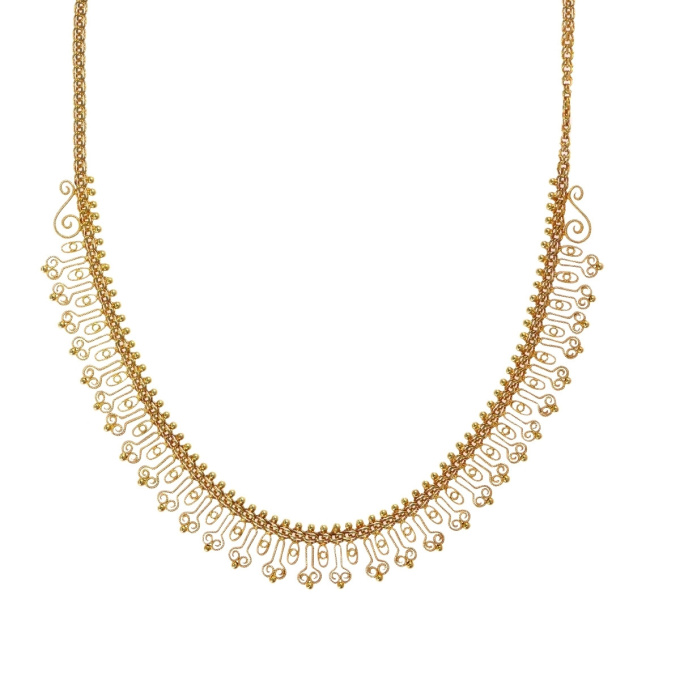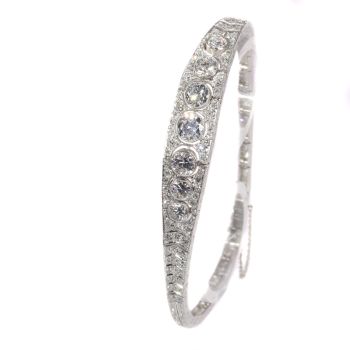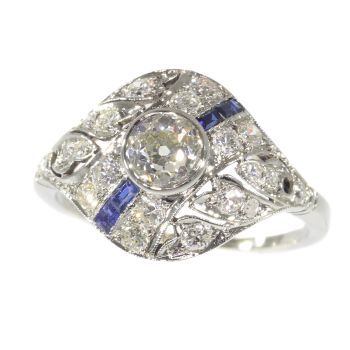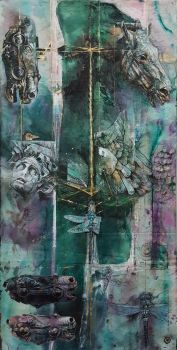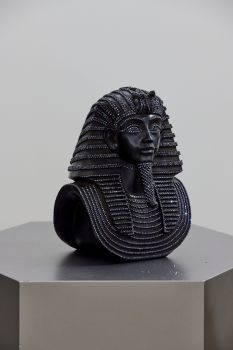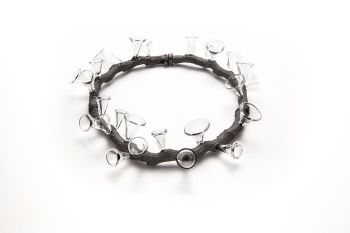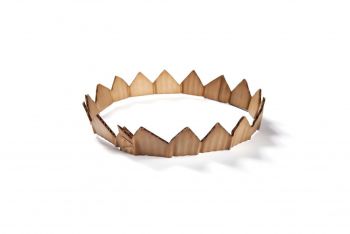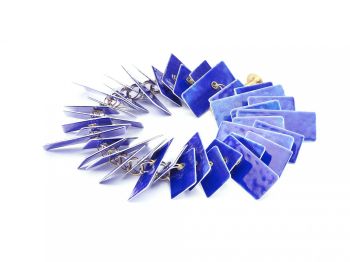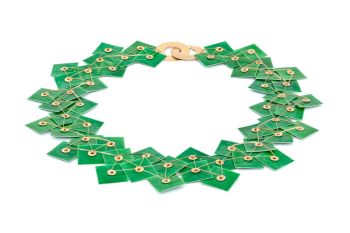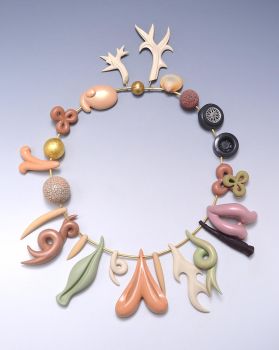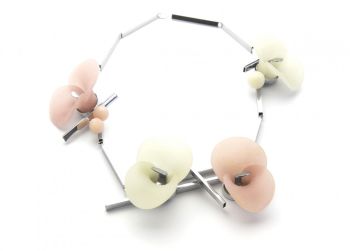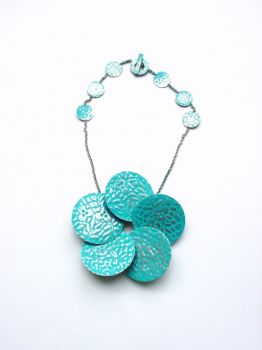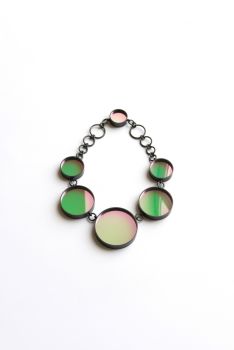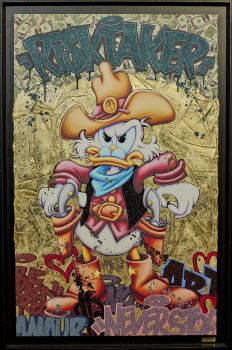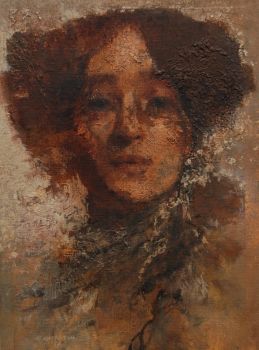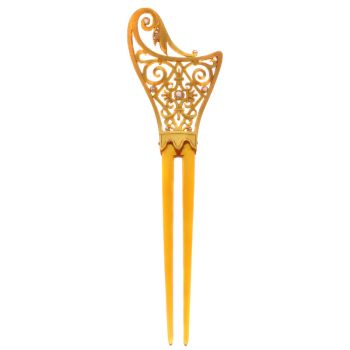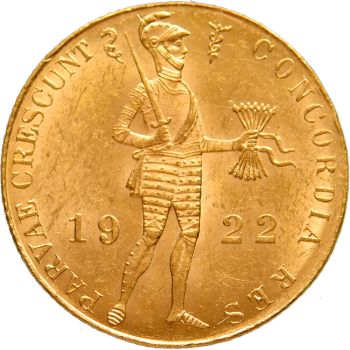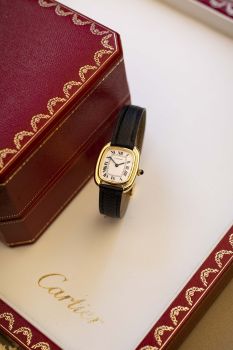Antike holländische etruskische Wiederbelebung mit filigraner Schleife aus Gold 1915
Unbekannter Künstler
FiligranGold
Derzeit nicht über Gallerease verfügbar
- Über Kunstwerk
Antique jewelry object group: necklace (adjustable in size)
Condition: very good condition
- (more info on our condition scale)
Country of origin: Netherlands
Style: Late-Victorian - Victorian decorative arts refers to the style of decorative arts during the Victorian era. The Victorian era is known for its eclectic revival and interpretation of historic styles and the introduction of cross-cultural influences from the middle east and Asia in furniture, fittings, and Interior decoration.
Victorian design is widely viewed as having indulged in a regrettable excess of ornament. The Arts and Crafts movement, the aesthetic movement, Anglo-Japanese style, and Art Nouveau style have their beginnings in the late Victorian era.
- See also: late-Victorianor more info on styles
Style specifics: The Late or Aesthetic Victorian Period - Experts divide the reign of Queen Victoria, also called The Victorian era (1837-1901) into three periods of about twenty years each; The Romantic Victorian Period (1837 - 1860), The Grand Victorian Period(1860 - 1880), and the Late or Aesthetic Victorian Period (1880 - 1901).
We consider this to be of The Late or Aesthetic Victorian Period.
Jewelry of this period is changing back from heavy to more smaller, romantic pieces with often whimsical motifs. Jewelers using diamonds and bright gemstones in elaborated and fine feminine pieces.
Period: ca. 1915
- (events & facts of this era, poetry of this era, fashion of this era)
Source of inspiration: etruscan filigree bow necklaces
Material: 14K yellow gold (touchstone tested)
- (more info on precious metals)
Technique: Filigree (formerly written filigrann or filigrane) is a delicate kind of jewel work made with twisted threads usually of gold and silver or stitching of the same curving motifs. It often suggests lace and French from 1660 to the late 19th century. Itshould not be confused with ajoure jewellery work; while both have many open areas, filigree involves threads being soldered together to form an object and ajoure involves holes being punched, drilled, or cut through an existing piece of metal. (from: Wikipedia)
Extra information: Etruscans - The Etruscans were a mysterious people. Their place of origin is still unknown, and their language little understood. Their art showed influences of earlier Italian cultures, the eastern Mediterranean, and Greece, but their style is uniquely their own. Even though most of the Etruscan art that has been found was made for funeral purposes, its strength and vigor fill it with life.
Hallmarks: The Dutch control mark representing an oak leaf and that was in use between 1906 and 1953.
- (more info on hallmarks)
Dimensions: adjustable between 54,00 cm (21,26 inch) and 36,00 cm (14,17 inch) - See picture with a ruler in cm and inches
Weight: 15,60 gram (10,03 dwt)
Adin Reference Nº: 21088-0001
Copyright photography: Adin, fine antique jewellery
jewelry with fringes, tassels & dangles, jewelry with filigree & granules, yellow gold jewelry, latest acquisitions,
antique jewelry, estate jewelry, vintage jewelry or modern jewelry
Jewelry with birthstones (or month stones) for:
January - February - March - April - May - June - July
August - September - October - November or December.
Additional information:
jewelry glossary - wall of fame - visit us in Antwerp - subscribe to our mailinglist.
What is antique jewelry? - What is estate jewelry? - What is vintage jewelry?
- Über Künstler
Es kann vorkommen, dass ein Künstler oder Hersteller unbekannt ist.
Bei einigen Werken ist nicht zu bestimmen, von wem sie hergestellt wurden, oder sie wurden von (einer Gruppe von) Handwerkern hergestellt. Beispiele sind Statuen aus der Antike, Möbel, Spiegel oder Signaturen, die nicht klar oder lesbar sind, aber auch einige Werke sind überhaupt nicht signiert.
Außerdem finden Sie folgende Beschreibung:
•"Zugeschrieben …." Ihrer Meinung nach wohl zumindest teilweise ein Werk des Künstlers
•„Atelier von ….“ oder „Werkstatt von“ Ihrer Meinung nach eine Arbeit, die im Atelier oder in der Werkstatt des Künstlers, möglicherweise unter seiner Aufsicht, ausgeführt wurde
•„Kreis von ….“ Ihrer Meinung nach ein Werk aus der Zeit des Künstlers, das seinen Einfluss zeigt, eng mit dem Künstler verbunden, aber nicht unbedingt sein Schüler
•"Art von …." oder „Anhänger von ….“ Ihrer Meinung nach eine Arbeit, die im Stil des Künstlers ausgeführt wurde, aber nicht unbedingt von einem Schüler; kann zeitgenössisch oder fast zeitgenössisch sein
•„Art von ….“ Ihrer Meinung nach ein Werk im Stil des Künstlers, aber späteren Datums
•"Nach …." Ihrer Meinung nach eine Kopie (jegliches Datums) eines Werks des Künstlers
• „Unterzeichnet …“, „Datiert …“. oder „Beschriftet“ Ihrer Meinung nach wurde das Werk vom Künstler signiert/datiert/beschriftet. Das Hinzufügen eines Fragezeichens weist auf einen Zweifel hin
• „Mit Unterschrift …“, „Mit Datum …“, „Mit Aufschrift ….“ oder „Trägt Unterschrift/Datum/Beschriftung“ ihrer Meinung nach die Unterschrift/Datum/Beschriftung von jemand anderem als dem Künstler hinzugefügt wurde
Artwork details
Related artworks
- 1 - 4 / 12
Unbekannter Künstler
Diamantarmband aus dem 18. Jahrhundert mit 2000 Jahre alten Intaglios1790
€ 23.000Adin Fine Antique Jewellery
 Kuratiert von
Kuratiert vonDanny Bree
1 - 4 / 10- 1 - 4 / 24
- 1 - 4 / 24

